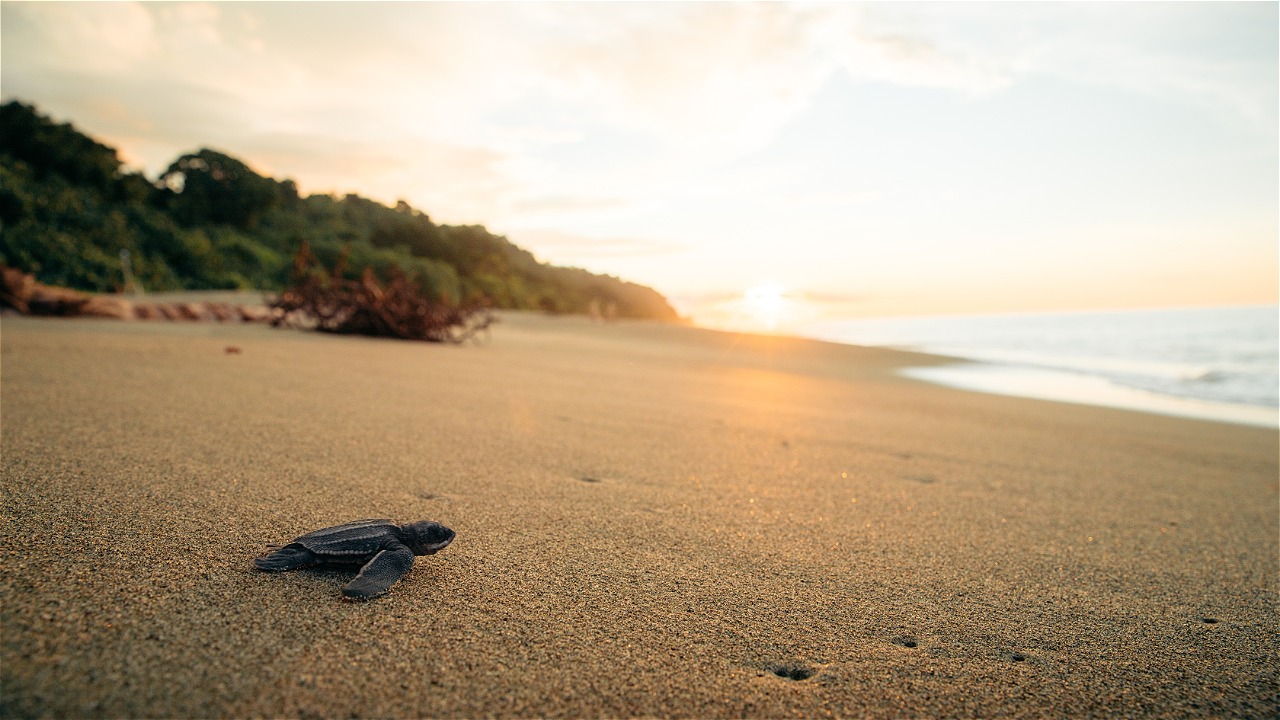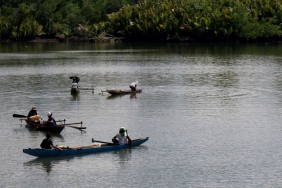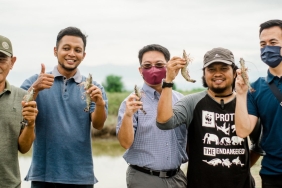RELEASING HAWKSBILL TURTLE HATCHLINGS FROM HOAT ISLAND IN CLEAR WATERS OF SOUTHEAST MALUKU
By: Syarif Yulius Hadinata (Marine Species Assistant for Inner Banda Arc Subseascape, WWF-Indonesia)
"This is the season of strong waves, only one hawksbill turtle nest hatched last February 25, while two other nests were lost to the waves," said Wilhelmus Ohoiwutun, a member of the fishermen group 'Hoat Indah'. This fishermen group is part of the 'Penyu Lestari' seaweed farming network assisted by WWF-Indonesia's Inner Banda Subseascape Project in Hoat Island, Southeast Maluku. "There are a total of 77 hatchlings from one nest that hatched," added his friend, Esebius Kanarubun, at the hatchling release event that afternoon (28/02/2017).
In January, three hawksbill turtles (Eretmochelys imbricata)visited Hoat Island to lay their eggs. This protected biota is known as teteruga clam by the coastal communities in the Kei Islands. A month after the hatching was reported by members of the Hoat Indah fishing group, the hatched hatchlings were released into the ocean - where they will grow and thrive.
The 'Hoat Indah' fishermen are indeed one of the groups that actively conserve natural resources. Not only do they take advantage of nature by cultivating environmentally friendly seaweed on Hoat and Nai Islands, they are also involved in monitoring the core zone in the Coastal and Small Islands Conservation Area (KKP3K), Small Island Park (TPK), Kei Kecil Island, Islands, and surrounding waters in Southeast Maluku Regency (Malra), Maluku Province.
The fishermen group that inhabits Ohoi (village) Debut and was confirmed on April 28, 2016, has become one of the guardians of the waters. Guarding it from the crime of illegallegal fishing as well as the capture and trade of protected animals from irresponsible individuals.
For example, by reporting rare events or violations that exist. Including reporting the hatching of turtle eggs that they found while conducting seaweed cultivation activities.
The head of the Southeast Maluku Regency Fisheries Office, Nico Ubro, and WWF Indonesia's Project Leader - Inner Banda Arc Subseascape (IBAS), Hero Ohoiulun, also released the hawksbill turtle hatchlings that day. "The release of these hatchlings is a small way for the people of Southeast Maluku to contribute to nature conservation efforts, especially the protection of sea turtles in the Kei Kecil TPK and surrounding islands and waters," said Nico Ubro. "This agenda can even become one of a series of Meti Kei Festival events, our annual tourism event together," he said later.
In addition to government permission, making the release of hatchlings as a tourist attraction must comply with the rules of the Code of Conduct; Government Regulations No. 8/1999 and No. 60/2007 and Veterinary Public Health (Kesmavet). Tourists must understand procedures, conservation and marine biology. For example, hatchlings should be released shortly after hatching because they still have energy storage in the form of egg yolk in their bodies to swim non-stop (swimming frenzy) and avoid predators. Except for hatchlings that are still weak, they must undergo rehabilitation for 1-2 days.
Release should be done after sunset or before sunrise to avoid predators, with the distance attempted to be the same as from the nest to the sea. Tourists should not assist the hatchlings by lifting them into the sea, nor should they use flashlights, except to ensure that all hatchlings have reached the open sea. With these rules in place, the released hatchlings will "find their way to the sea" - not only from the shores of Hoat Island, but other islands in Indonesia.





